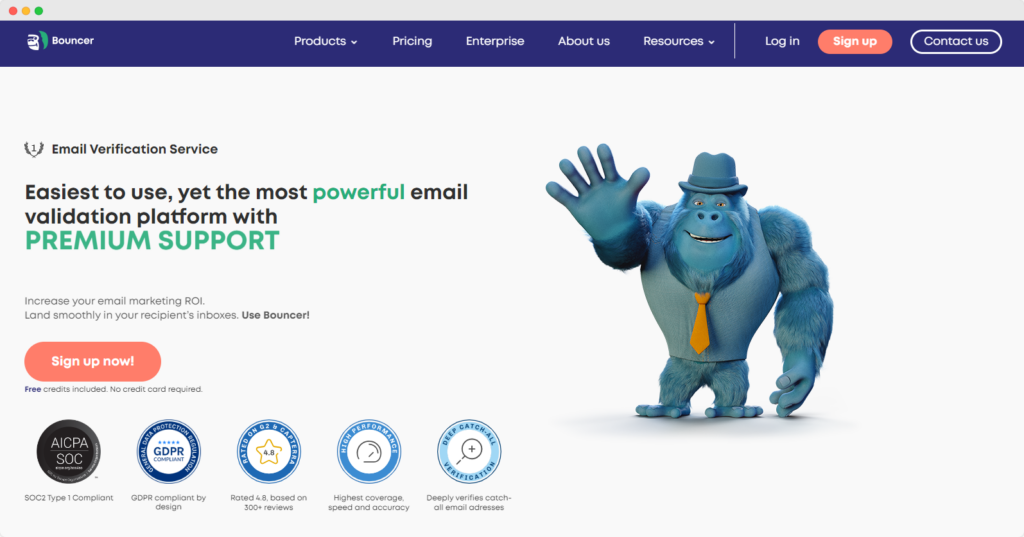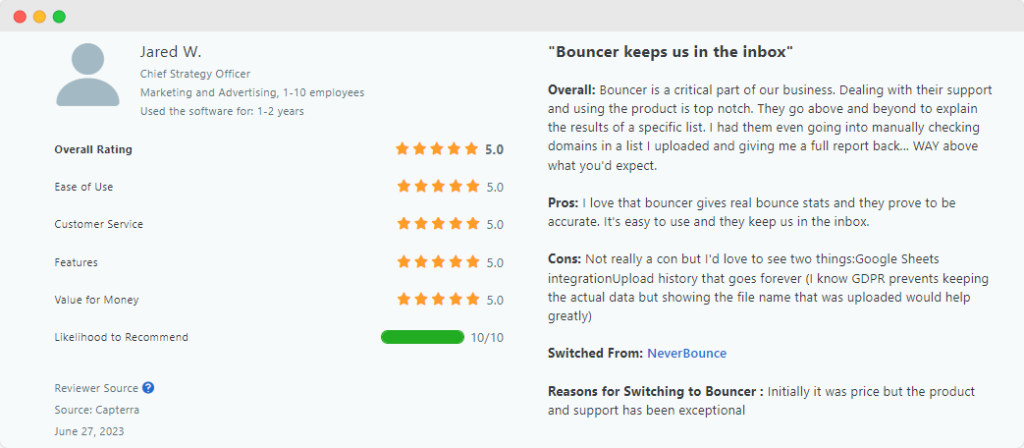Have you ever had website visitors fill out your forms with fake or poorly formatted emails?
Validating user input is a fundamental step in creating secure, user-friendly web applications. But how to tackle this task without writing heaps of custom validation code for every form field?
For example, you can use Yup – a JavaScript schema validation library designed to simplify and streamline the process of validating forms and user data in web development projects.
What exactly is Yup, and how can it transform your validation work? Let’s find out.
What is Yup?
Yup is a lean, powerful JavaScript schema builder for value parsing and validation. It acts as a Javascript schema validation library and enables developers define a schema to validate user input, data fields, phone numbers, and more.
Shortly speaking, Yup language can create complex validation rules, so you can make it a go-to solution for ensuring data integrity within your applications. Also, you can use it to validate emails.
And how it works?
At its core, Yup allows you to define validation objects (schemas) that specify the shape of your data, the types of values each field can contain, and any rules those values need to follow.
For example, if you’re handling a user registration form, your Yup schema might specify that:
- the email field must be a valid email address
- and the password field must be a string that meets certain complexity requirements
However, this isn’t a perfect solution for email validation. In later sections, we will show you another, better tool for email validation, but first, let’s explore Yup validation rules.
Different validation rules in Yup
Yup provides a set of validation rules that cover a wide range of data types and scenarios. For example:
- Basic email validation – such as string, number, and boolean
- Advanced validation techniques – like regex patterns for strings, or min/max values for numbers
- Custom validation function – developers aren’t limited to the built-in validations provided by the library. If your application has unique data validation needs, Yup gives you the tools to write custom validation functions that can be integrated into your existing validation schemas.
If you understand these rules and utilize them effectively, you will bolster the integrity of your data, enhance the overall user experience, and guarantee that the data collected is valid, reliable, and ready for processing.
Yup features and use cases
So, what exactly can Yup do, and what scenarios will it work in?
- Help in email validation
Developers can set up a rule to validate email addresses and see if users provide a valid email format before submitting a form. Its validation rules and methods can be applied to improve data quality and user experience in web applications.
- Support a variety of built-in validation methods
Yup allows you to identify not only common data types and patterns, such as strings, and numbers, but even complex objects and arrays. It’s extensible, so you can write custom validation functions if your application requires checks that go beyond Yup’s built-in capabilities.
- Send custom error messages
Instead of confusing your users with cryptic default error messages, Yup lets you define clear, understandable feedback that can help users correct their input more effectively. This feature is particularly valuable when you want to help users enter correct data.
- Reduce the amount of code you need to write and maintain
In the context of web development, using Yup can significantly reduce the amount of code you need to write and maintain for form validation. It integrates seamlessly with popular front-end frameworks, such as React, so it’s a versatile choice for developers looking to implement robust validation solutions in their projects.
Yup validation is no small thing. Admittedly, it requires a lot of learning and technological knowledge, but eventually, it can eliminate errors from invalid email entries.
How to do Yup email validation?
To perform email validation using Yup, you’ll be leveraging its flexible API.
This process involves four steps and offers two main methods for email validation: the string.email method for basic format checks and the string.matches method for more customized checking.
Let’s delve into how these methods can be utilized through a test function.
Set up Yup
First, you’ll need to add Yup to your project. It can be downloaded using a package downloader like npm. Download it with a simple command:
npm install yup
When done, you can start creating validation schemas. A basic validation schema setup might look like this:
import * as yup from ‘yup’;
const schema = yup.object().shape({
email: yup.string().email(‘Invalid email format’).required(‘Email is required’),
});
Create an email validation schema
For basic email format validation, you use the string.email method, as it checks if the user input adheres to a general email structure:
const emailSchema = yup.object({
email: yup.string().email(‘Invalid email format’),
});
To explore a more customized approach, you can use the string.matches method along with a regular expression and a custom validation function. This method is particularly useful if you have specific criteria for what constitutes a valid email in your application:
const emailSchema = yup.object({
email: yup.string().matches(/^[A-Z0-9._%+-]+@[A-Z0-9.-]+.[A-Z]{2,}$/i, ‘Invalid email format’),
});
Integrate with Forms
Now, integrate Yup email validation into forms, for example, within frameworks like React. You can use Formik here – a package that can be installed into a React application and is built specifically to work with it. Below is a simple example using React’s state to handle the form submission and validation feedback:
import React, { useState } from ‘react’;
import { useFormik } from ‘formik’;
import * as yup from ‘yup’;
const validationSchema = yup.object({
email: yup.string().email(‘Invalid email format’).required(‘Email is required’),
});
const EmailForm = () => {
const formik = useFormik({
initialValues: { email: ” },
validationSchema,
onSubmit: (values) => alert(‘Form submitted’),
});
return (
);
};
The code listed above is only part of a larger whole. If you want to go into more detail, use the appropriate documentation.
Handle validation feedback
Remember to use validation feedback for a better user experience. Imagine filling out a form and making a mistake; you’d want to know exactly what went wrong and how to fix it, right?
That’s where Yup steps in with its custom error messages. Instead of leaving users guessing, Yup lets you spell precisely what they need to do to correct their input.
You can show these custom error messages right next to the form fields they relate to. This way, users get immediate feedback if they’ve entered something incorrectly, like an email in the wrong format. They won’t have to wait until they hit “submit” to find out something was amiss, so the whole process will feel more like a conversation and less like a guessing game.
Why Yup email validation is not a great choice
While Yup offers a convenient way to implement validation rules within applications, it might not always be the ideal choice for all scenarios.
The primary function of Yup’s email validation is to check if the input matches a basic email format. This means it might not catch more sophisticated issues with email addresses, such as those with valid formats but inactive or nonexistent domains, spam traps, catch-all emails, etc.
It also doesn’t verify the deliverability of an email address or check against high-risk or disposable email providers, which, after all, is crucial for businesses relying on email communication for customer engagement or marketing purposes.
Moreover, implementing advanced email validation features in Yup requires custom validation rules, which can add complexity and development overhead.
For applications where email validation is critical to operations or user experience, these limitations suggest that a more specialized tool might be necessary.
That’s the reason to use Bouncer – a tool built specifically for email validation that surpasses the capabilities of general validation libraries like Yup.
The better alternative to Yup email validation
Bouncer is emerging as a superior alternative to Yup for email validation, and now we will explain why.

Bouncer offers an array of advanced and basic tools tailored specifically for email issues. Our email checker will not only verify the syntax of an email but also:
- run DNS and MX record check
- establish a connection with the recipient’s server SMTP
- utilize our proprietary algorithms supported by AI to negotiate with the SMTP servers to get you the most accurate results possible
- test the quality of your list
- mark all the emails containing inactive or invalid domains
- identify email addresses that accept all incoming mail
- check your IPs and domains are not listed on any blocklists
- and more
Bouncer has an impressive verification accuracy of 99.5% and can significantly reduce the chances of false positives.
➡️ The high level of precision is instrumental in maintaining a clean email list and boosting overall deliverability – key factors for successful email marketing and communication strategies.
Bouncer’s email verification API is designed for speed. It can process up to 500,000 emails in a single batch, with rate limits set to accommodate both batch (200 requests per minute) and real-time (1,000 requests per minute) verification processes.
➡️ High speed ensures that businesses like yours can verify large volumes of email addresses quickly and efficiently, which is essential for operations requiring rapid data processing.
What sets Bouncer apart is not just its technical capabilities but also its commitment to user support. With access to premium customer assistance through various channels, including email, contact forms, and video calls, users receive the help they need to navigate any challenges or integration issues.
➡️ Such a level of support contributes to a smooth and efficient user experience, regardless of the complexity of the validation tasks at hand.
Moreover, Bouncer offers competitive pricing options that cater to businesses of all sizes. Its pay-as-you-go model and monthly plans, along with volume discounts, allow for flexible scaling of verification efforts according to specific needs.
➡️ Bouncer is an affordable tool that offers robust functionality and makes it an attractive choice for businesses looking to optimize their email validation processes without breaking the bank.
High user satisfaction scores further validate Bouncer’s effectiveness as an email verification service.

Choosing Bouncer means that instead of writing lines of code, you get a tool that will take care of your email marketing campaign and evaluate the correctness of the data entered by users with high efficiency.
From now on, you don’t need to outsource the work to someone else or think about hiring developers because you have specifically designed software at your fingertips.
Validate emails quickly and accurately
Yup can handle schema validation with its efficient approach.
No matter if you’re validating simple form fields or complex nested objects – Yup can ensure your data is correct and useful. By incorporating this language into your development stack, you can streamline validation processes, enhance data integrity, and create better experiences.
But what if you don’t have technology skills or a team of developers but just want a simple yet powerful tool that will take care of validating email addresses and improve your email marketing campaigns?
Then it’s better if you choose Bouncer.
Get to know Bouncer and see that it can do much more than Yup. Sign up today and validate your first 100 emails for free!


